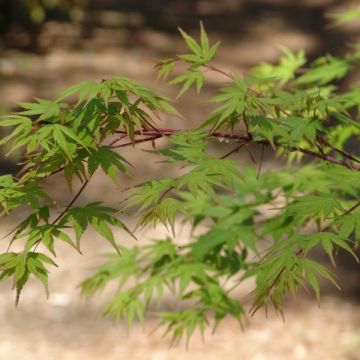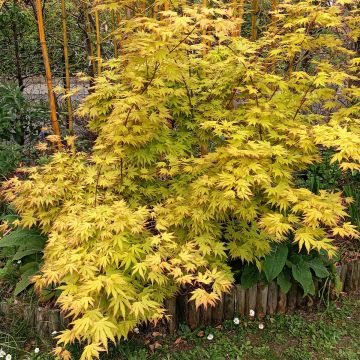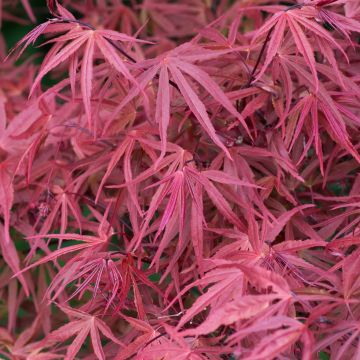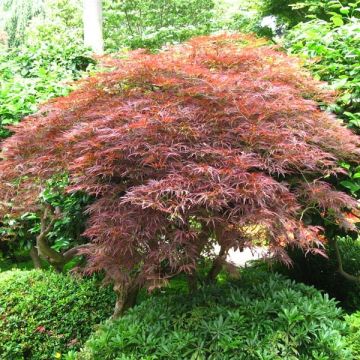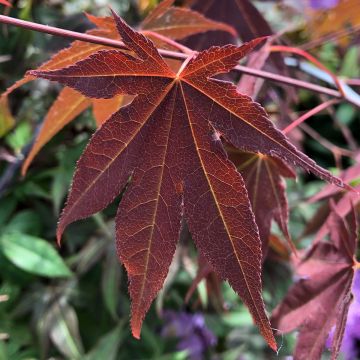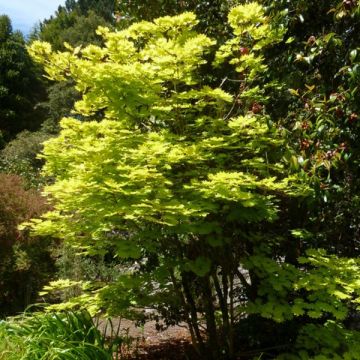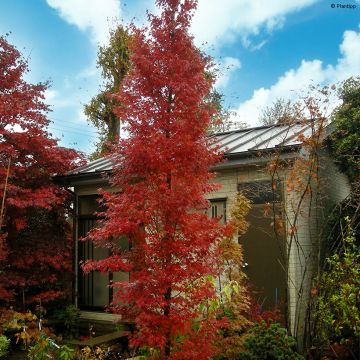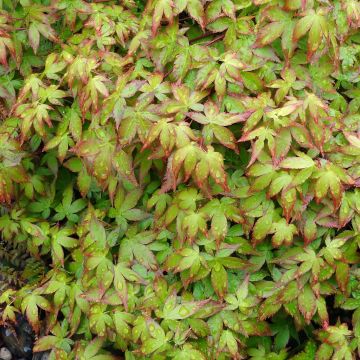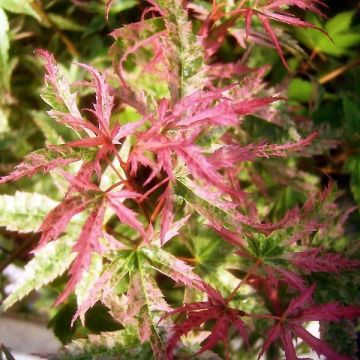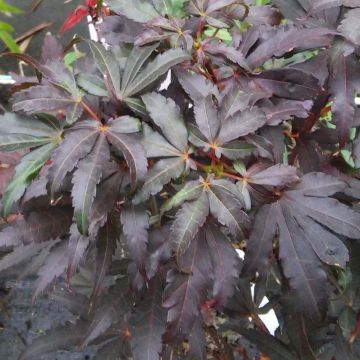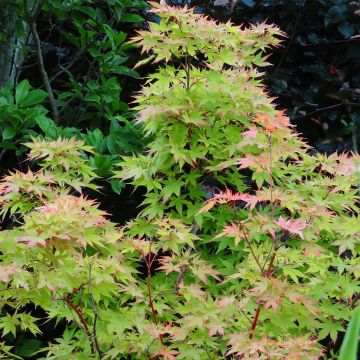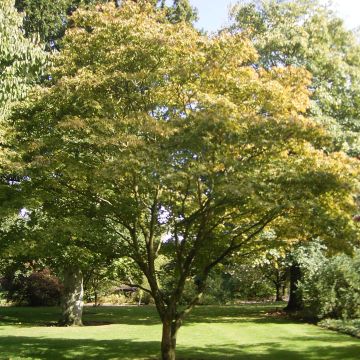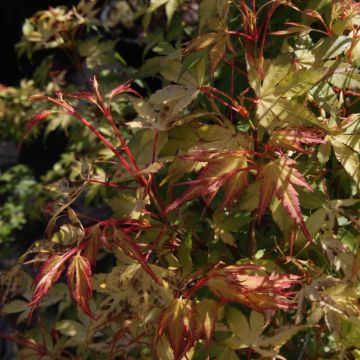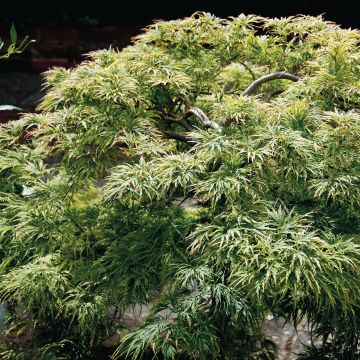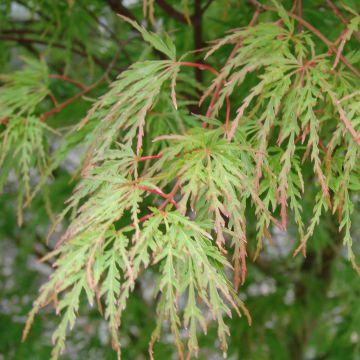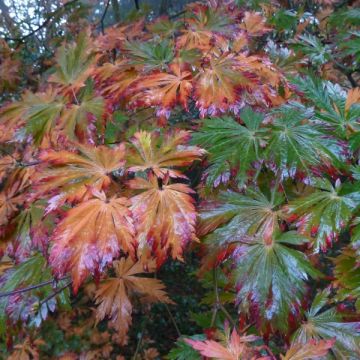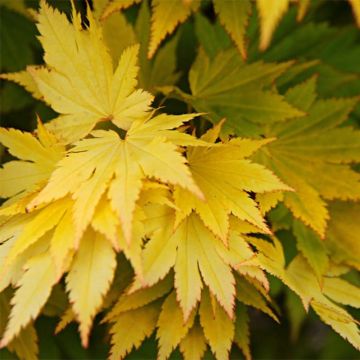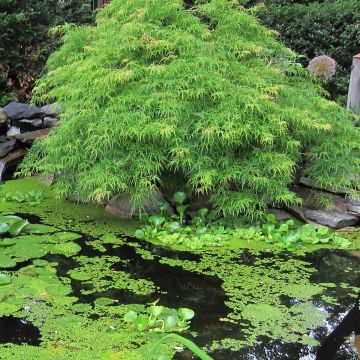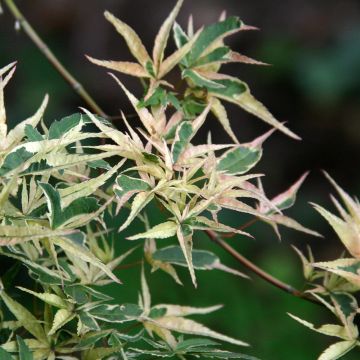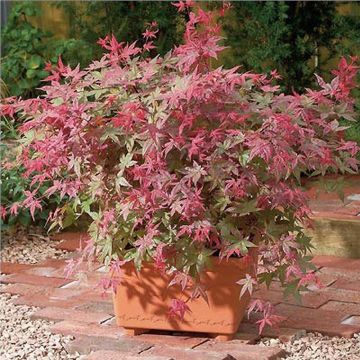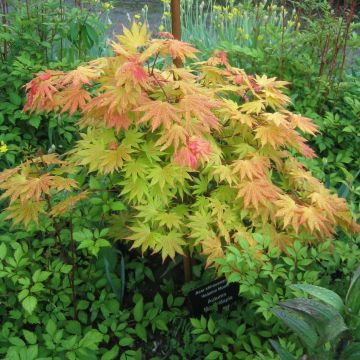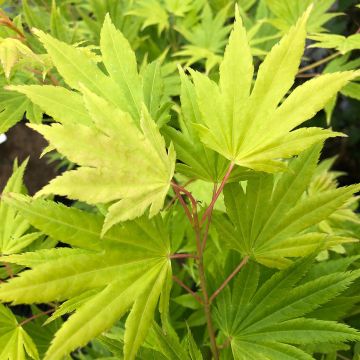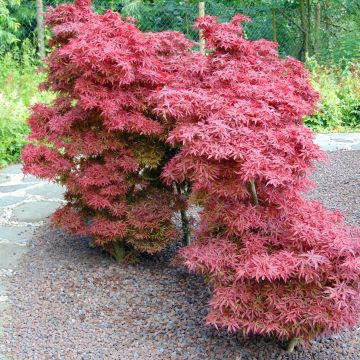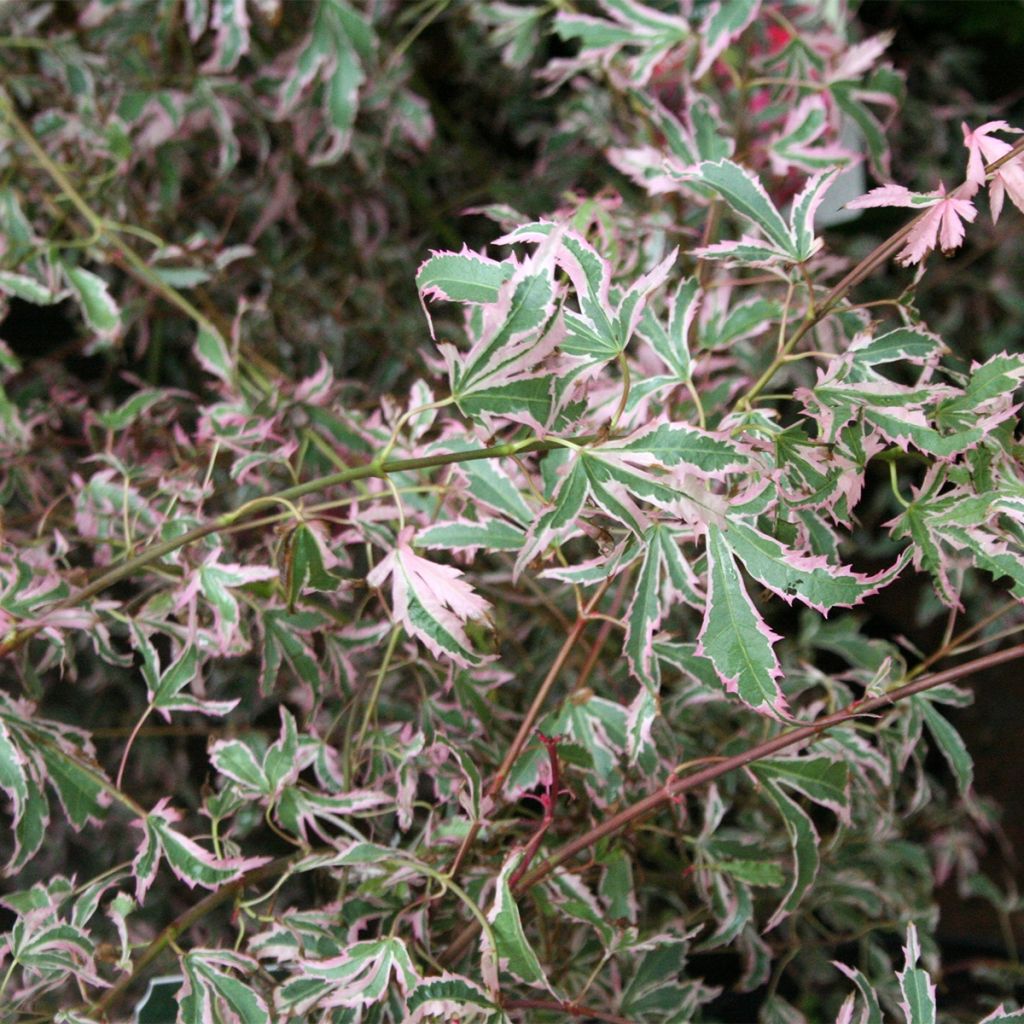

Acer palmatum Marlo - Japanese Maple
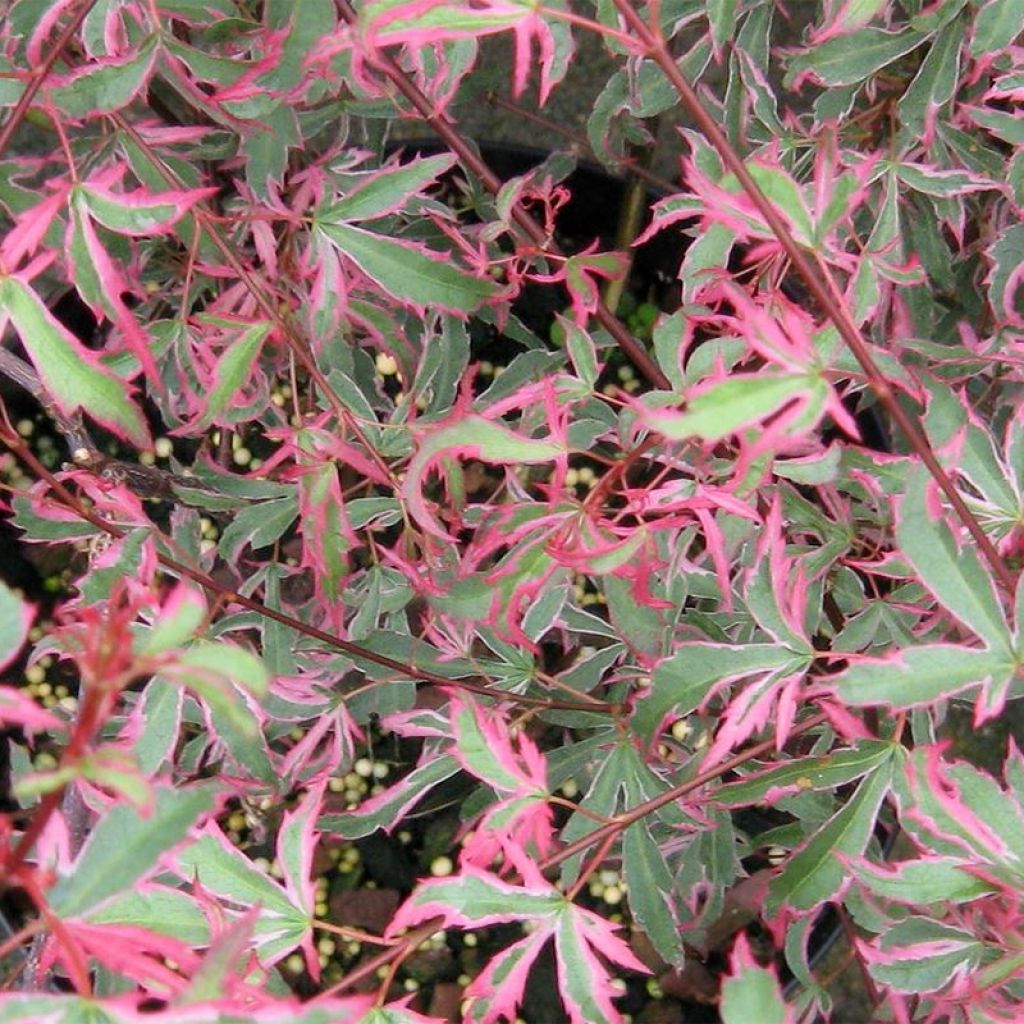

Acer palmatum Marlo - Japanese Maple
Acer palmatum Marlo - Japanese Maple
Acer palmatum Marlo
Japanese Maple, Palmate Maple
Why not try an alternative variety in stock?
View all →This plant carries a 24 months recovery warranty
More information
We guarantee the quality of our plants for a full growing cycle, and will replace at our expense any plant that fails to recover under normal climatic and planting conditions.
From €5.90 for pickup delivery and €6.90 for home delivery
Express home delivery from €8.90.
Delivery to Corse prohibited: UE law prohibits the import of this plant from mainland France to Corse as part of the fight against Xylella fastidiosa. Please accept our sincere apologies.
More information
Does this plant fit my garden?
Set up your Plantfit profile →
Description
Acer palmatum 'Marlo' is a variety of Japanese maple selected in Holland for its remarkable foliage. Its deeply cut leaves are edged in pink in spring. This border fades as the leaf matures, but the young shoots produced in summer retain this pink pigmentation, which stands out against the rest of the now green foliage. In autumn, the leaves eventually turn a beautiful red. Slow-growing, this Japanese maple reaches 1.5m (5ft) in 10 years. Magnificent but very susceptible to powdery mildew, it is a plant for connoisseurs.
Native to eastern China, Korea, and Japan, Acer palmatum is the origin of a multitude of horticultural varieties that compete in beauty. Japanese maple now belongs, like all maples, to the Sapindaceae family (formerly Aceraceae). It is hardy, but cannot tolerate dry and cold winds, scorching exposure, and dry and chalky soils.
The cultivar 'Marlo' exhibits exceptional foliage colours. One of the first Japanese maples to bud in spring, it produces beautiful palmate leaves with deeply cut lobes - almost to the base - irregularly toothed and more or less undulate laterally. This beautiful aesthetic is enhanced by an additional attraction, as a bright pink margin contrasts with the green of the central part of the lobes. This colour fades in summer, with the leaf becoming entirely green, but the young shoots produced during the growing season proudly display this original pink pigment. Finally, in autumn, the entire foliage takes on a magnificent red colour.
This variety has a rather slow growth rate and limited development. With a height of 1.5m (5ft) at 10 years and an equivalent width, it does not exceed 2m (7ft) at maturity. This makes it suitable for small gardens as well as container cultivation.
Acer palmatum 'Marlo' is not strictly speaking an acidic-soil plant, but it prefers humus-rich and moisture-retaining soils. However, the soil should be well-draining to avoid compromising its survival, as it is a rather delicate plant. It cannot tolerate atmospheric drought and must be protected from wind and full sun, which would scorch its delicate leaves. Above all, it is very susceptible to powdery mildew, which attacks its foliage, deforming it and covering it with a characteristic white fuzz. In spring, it can also be targeted by aphids. It needs a great deal of care so it should not be the first Japanese maple to try in the garden; it is not a plant for beginners!
Enthusiasts will appreciate the aesthetic potential of this small maple by planting it with other plants with fine or laciniate foliage. The bleeding heart 'Stuart Boothman' with its delicate greyish foliage will share the same soil and exposure requirements. Other low-growing plants, such as the golden summer heather, will create a nice colour contrast with the foliage of our little 'Marlo' maple. In the background, a purple birch will provide the shade it needs while highlighting its fine foliage against a dark background.
Report an error about the product description
Acer palmatum Marlo - Japanese Maple in pictures
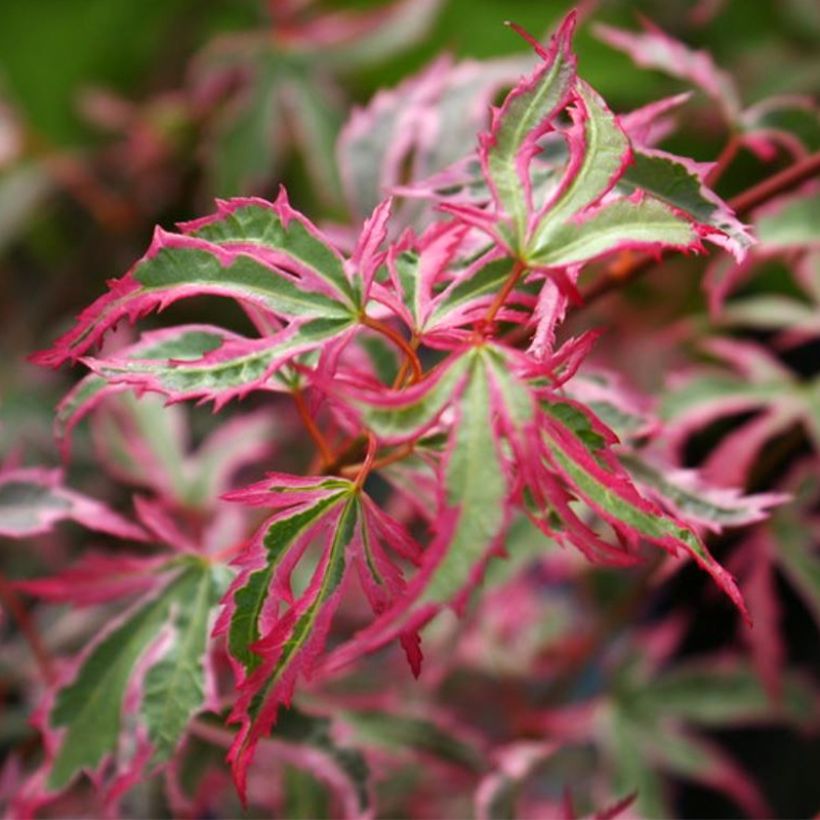

Plant habit
Flowering
Foliage
Botanical data
Acer
palmatum
Marlo
Sapindaceae
Japanese Maple, Palmate Maple
Cultivar or hybrid
Other Japanese Maples
Planting and care
Plant in spring or autumn in preferably light, humus-rich, neutral to acidic, deep, loose and well-drained soil. It is best suited for a semi-shaded or even shaded position, as it does not tolerate full sun. It should also be protected from cold and dry winds that may dry out its magnificent foliage. The soil should be kept moist by mulching in summer, if necessary, but it should also be well-drained to avoid weakening the roots.
In the case of planting in a container, use a slightly acidic substrate (pH 6) mixed with a little compost. Water regularly, especially in summer, choose a shaded exposure, especially for the afternoon, and sheltered from the wind. Never forget that growing conditions in containers are drier than in open ground.
Monitor the appearance of scale insects or aphids that may launch attacks in spring, and get rid of them by treating with black soap. As for diseases, be careful of Verticillium in open ground, a fungal disease that occurs in heavy and wet soil (less of a risk in containers).
Powdery mildew is a declared enemy of this delicate variety.
Planting period
Intended location
Care
This item has not been reviewed yet - be the first to leave a review about it.
Haven't found what you were looking for?
Hardiness is the lowest winter temperature a plant can endure without suffering serious damage or even dying. However, hardiness is affected by location (a sheltered area, such as a patio), protection (winter cover) and soil type (hardiness is improved by well-drained soil).

Photo Sharing Terms & Conditions
In order to encourage gardeners to interact and share their experiences, Promesse de fleurs offers various media enabling content to be uploaded onto its Site - in particular via the ‘Photo sharing’ module.
The User agrees to refrain from:
- Posting any content that is illegal, prejudicial, insulting, racist, inciteful to hatred, revisionist, contrary to public decency, that infringes on privacy or on the privacy rights of third parties, in particular the publicity rights of persons and goods, intellectual property rights, or the right to privacy.
- Submitting content on behalf of a third party;
- Impersonate the identity of a third party and/or publish any personal information about a third party;
In general, the User undertakes to refrain from any unethical behaviour.
All Content (in particular text, comments, files, images, photos, videos, creative works, etc.), which may be subject to property or intellectual property rights, image or other private rights, shall remain the property of the User, subject to the limited rights granted by the terms of the licence granted by Promesse de fleurs as stated below. Users are at liberty to publish or not to publish such Content on the Site, notably via the ‘Photo Sharing’ facility, and accept that this Content shall be made public and freely accessible, notably on the Internet.
Users further acknowledge, undertake to have ,and guarantee that they hold all necessary rights and permissions to publish such material on the Site, in particular with regard to the legislation in force pertaining to any privacy, property, intellectual property, image, or contractual rights, or rights of any other nature. By publishing such Content on the Site, Users acknowledge accepting full liability as publishers of the Content within the meaning of the law, and grant Promesse de fleurs, free of charge, an inclusive, worldwide licence for the said Content for the entire duration of its publication, including all reproduction, representation, up/downloading, displaying, performing, transmission, and storage rights.
Users also grant permission for their name to be linked to the Content and accept that this link may not always be made available.
By engaging in posting material, Users consent to their Content becoming automatically accessible on the Internet, in particular on other sites and/or blogs and/or web pages of the Promesse de fleurs site, including in particular social pages and the Promesse de fleurs catalogue.
Users may secure the removal of entrusted content free of charge by issuing a simple request via our contact form.
The flowering period indicated on our website applies to countries and regions located in USDA zone 8 (France, the United Kingdom, Ireland, the Netherlands, etc.)
It will vary according to where you live:
- In zones 9 to 10 (Italy, Spain, Greece, etc.), flowering will occur about 2 to 4 weeks earlier.
- In zones 6 to 7 (Germany, Poland, Slovenia, and lower mountainous regions), flowering will be delayed by 2 to 3 weeks.
- In zone 5 (Central Europe, Scandinavia), blooming will be delayed by 3 to 5 weeks.
In temperate climates, pruning of spring-flowering shrubs (forsythia, spireas, etc.) should be done just after flowering.
Pruning of summer-flowering shrubs (Indian Lilac, Perovskia, etc.) can be done in winter or spring.
In cold regions as well as with frost-sensitive plants, avoid pruning too early when severe frosts may still occur.
The planting period indicated on our website applies to countries and regions located in USDA zone 8 (France, United Kingdom, Ireland, Netherlands).
It will vary according to where you live:
- In Mediterranean zones (Marseille, Madrid, Milan, etc.), autumn and winter are the best planting periods.
- In continental zones (Strasbourg, Munich, Vienna, etc.), delay planting by 2 to 3 weeks in spring and bring it forward by 2 to 4 weeks in autumn.
- In mountainous regions (the Alps, Pyrenees, Carpathians, etc.), it is best to plant in late spring (May-June) or late summer (August-September).
The harvesting period indicated on our website applies to countries and regions in USDA zone 8 (France, England, Ireland, the Netherlands).
In colder areas (Scandinavia, Poland, Austria...) fruit and vegetable harvests are likely to be delayed by 3-4 weeks.
In warmer areas (Italy, Spain, Greece, etc.), harvesting will probably take place earlier, depending on weather conditions.
The sowing periods indicated on our website apply to countries and regions within USDA Zone 8 (France, UK, Ireland, Netherlands).
In colder areas (Scandinavia, Poland, Austria...), delay any outdoor sowing by 3-4 weeks, or sow under glass.
In warmer climes (Italy, Spain, Greece, etc.), bring outdoor sowing forward by a few weeks.

































